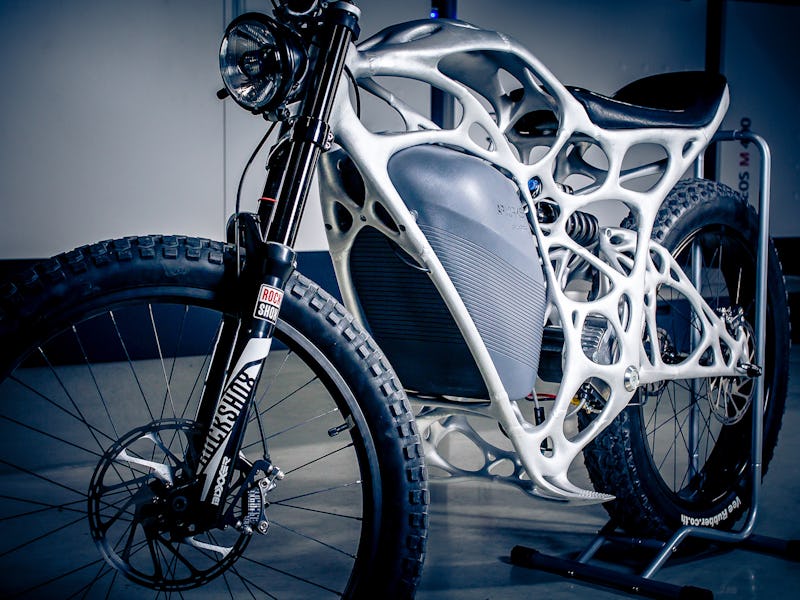Why Does the First 3D-Printed Electric Bike Look Completely Nuts?
Algorithmic modeling makes for surprising structures.

The German company APWorks just released a 3D-printed electric motorcycle named Light Rider, the first vehicle of its kind to come to (or close to, if we’re being real) market. It’s flashy and beautiful and lightweight, and it’s algorithmically modeled after nature’s own designs.
The Light Rider purportedly has a power-to-weight ratio equivalent to a supercar. It weighs in at just under 80 lbs; most (gas-powered) motorcycles weigh around 500 lbs. Its battery can take you almost 40 miles on a single charge at speeds of up to 50 mph.
You’ve heard of APWorks’s parent company, Airbus Group, which engages in a great deal of research and development for the world’s militaries and airlines. The groundbreaking technology here isn’t about function so much as form. The bike’s designers stepped away to allow algorithms to optimize for weight, strength, and durability. The bike was not, in short, designed to look natural: It looks natural because nature forms efficient structures. A machine-designed bike is, somewhat paradoxically, more likely to look natural than a bike designed by the guys on American Chopper.
While the bike is gorgeous enough to make even Tesla owners swoon, it’s still a little pricey — especially given the fact that 3D printing was supposed to drive production costs down across the board. You can reserve a Light Rider for just over $2,000, but the final bill will be well over $50k. It’s no less a great start to what ought to become a norm: leveraging nature to design the future’s electric vehicles. It’s symbiosis like never before — and it’s about damn time.